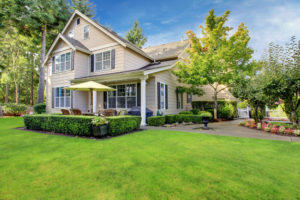Latest Posts
- Have a purpose when backyardingAugust 5 2021
- Study: Time outside alters our microbiomeAugust 4 2021
- Happy National Mutt Day from Mo-MoJuly 27 2021
- New home? Avoid these common mistakes in your yard.July 26 2021
- Infographic: Plan a backyard staycation this summerJuly 22 2021
Categories
Archive
May 30th
5 typical yard mistakes & how to avoid them

A yard is something many new homeowners look forward to when they purchase a property. After all, it’s a place to make memories with family and friends, to let kids and the family dog play safely, and to customize to your individual needs and desires.
But there are some mistakes that are easy for new homeowners to make. The Outdoor Power Equipment Institute (OPEI) shares the most common pitfalls and offers advice on how to avoid them.
Not having the right equipment for the space. Make sure your lawn mower is the right size for your new lawn. If the lot at your new property is more wooded, a chainsaw and/or hedge trimmer that you don’t have yet may be required. Or perhaps you are moving from an apartment to a single-family home for the first time and need all new equipment.
Choosing the wrong plants. You need to consider your micro-climate so your living landscapes thrive. Check the USDA’s Plant Hardiness Zone Map to determine which plants will do best in your new location.
Not considering lifestyle needs. You also need to consider your lifestyle when selecting and placing your living landscapes. Those who travel frequently will want to choose low-maintenance plants, flowers and shrubs. Homeowners with a family and/or pets need a large area of sturdy turfgrass for running and playing. Pro tip: plants can be used strategically to designate “activity zones” in your yard – separating a children’s play area from the dining space, for example.
Watering incorrectly. Plants will grow stronger and work harder – creating deeper, healthier roots – if they have to seek out water. Watering deeply, but less frequently, allows moisture to reach the roots of the grass and trees. Also, watering early in the morning reduces excess evaporation. Want to take the guesswork out of watering? Install soil moisture sensors and drip irrigation systems.
Cutting the grass too short. Proper mowing helps create a lower-maintenance, drought-tolerant lawn. Preferred length varies by grass type, but the general rule of thumb is to cut only the top third of the grass blades off at any given time. Taller grass blades shade the soil and keep it cooler, helping control weeds. Taller grass is also softer to walk on – important for little feet and paws.
To learn more about how to care for living landscapes and to learn how they benefit our health and well-being, go to SaveLivingLandscapes.com.





